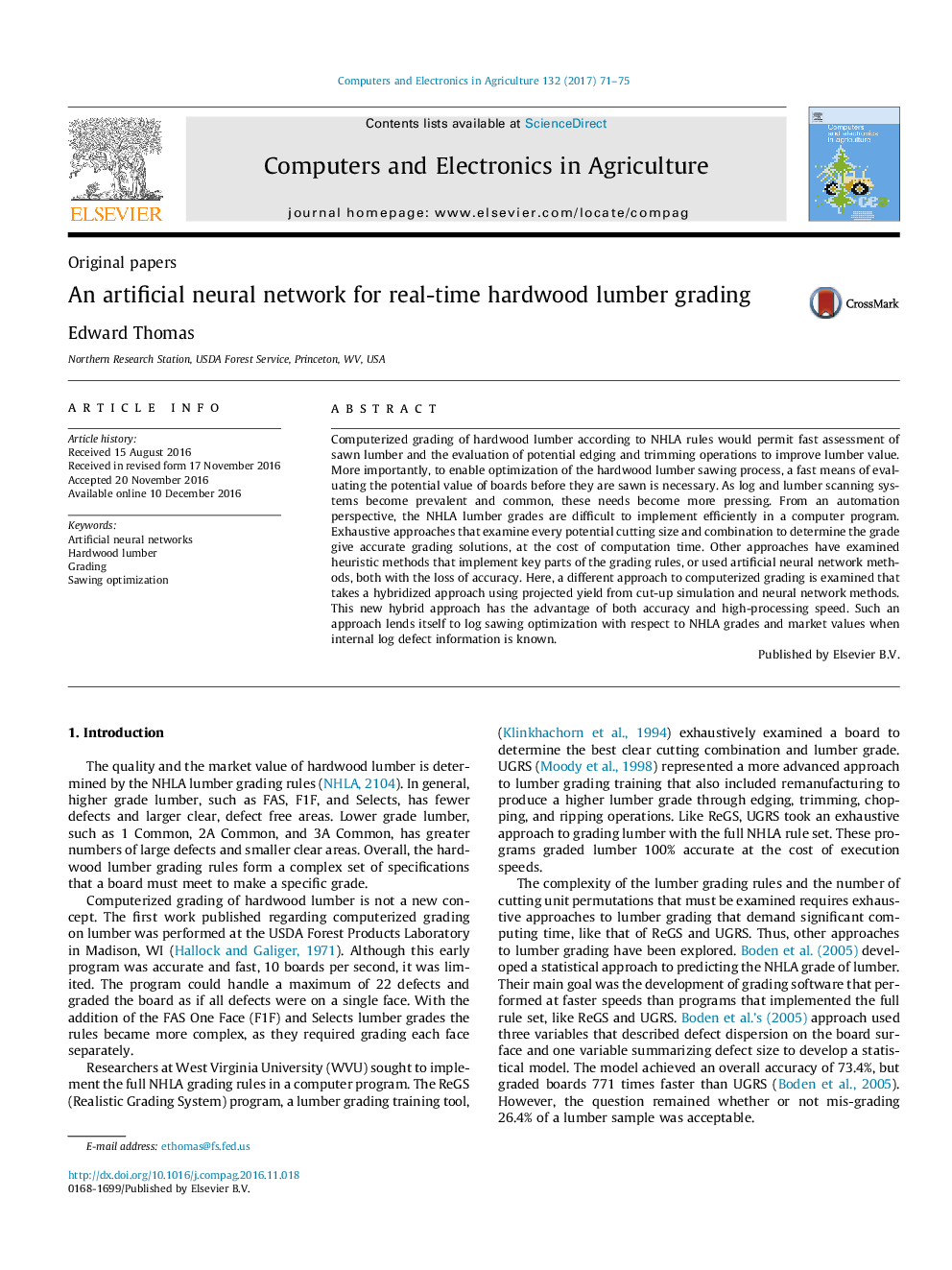| کد مقاله | کد نشریه | سال انتشار | مقاله انگلیسی | نسخه تمام متن |
|---|---|---|---|---|
| 4759223 | 1421116 | 2017 | 5 صفحه PDF | دانلود رایگان |
- A novel approach to computerized hardwood lumber grading is examined that takes a hybridized approach using projected yield from cut-up simulation and neural network methods.
- This new approach has the advantage of both accuracy and high-processing speed.
- This Artificial Neural Network (ANN) method achieved a higher overall accuracy of 80.2 versus 73.4% of earlier approaches.
- When compared with typical human lumber graders, computer-based approaches compare favorably.
Computerized grading of hardwood lumber according to NHLA rules would permit fast assessment of sawn lumber and the evaluation of potential edging and trimming operations to improve lumber value. More importantly, to enable optimization of the hardwood lumber sawing process, a fast means of evaluating the potential value of boards before they are sawn is necessary. As log and lumber scanning systems become prevalent and common, these needs become more pressing. From an automation perspective, the NHLA lumber grades are difficult to implement efficiently in a computer program. Exhaustive approaches that examine every potential cutting size and combination to determine the grade give accurate grading solutions, at the cost of computation time. Other approaches have examined heuristic methods that implement key parts of the grading rules, or used artificial neural network methods, both with the loss of accuracy. Here, a different approach to computerized grading is examined that takes a hybridized approach using projected yield from cut-up simulation and neural network methods. This new hybrid approach has the advantage of both accuracy and high-processing speed. Such an approach lends itself to log sawing optimization with respect to NHLA grades and market values when internal log defect information is known.
Journal: Computers and Electronics in Agriculture - Volume 132, January 2017, Pages 71-75
